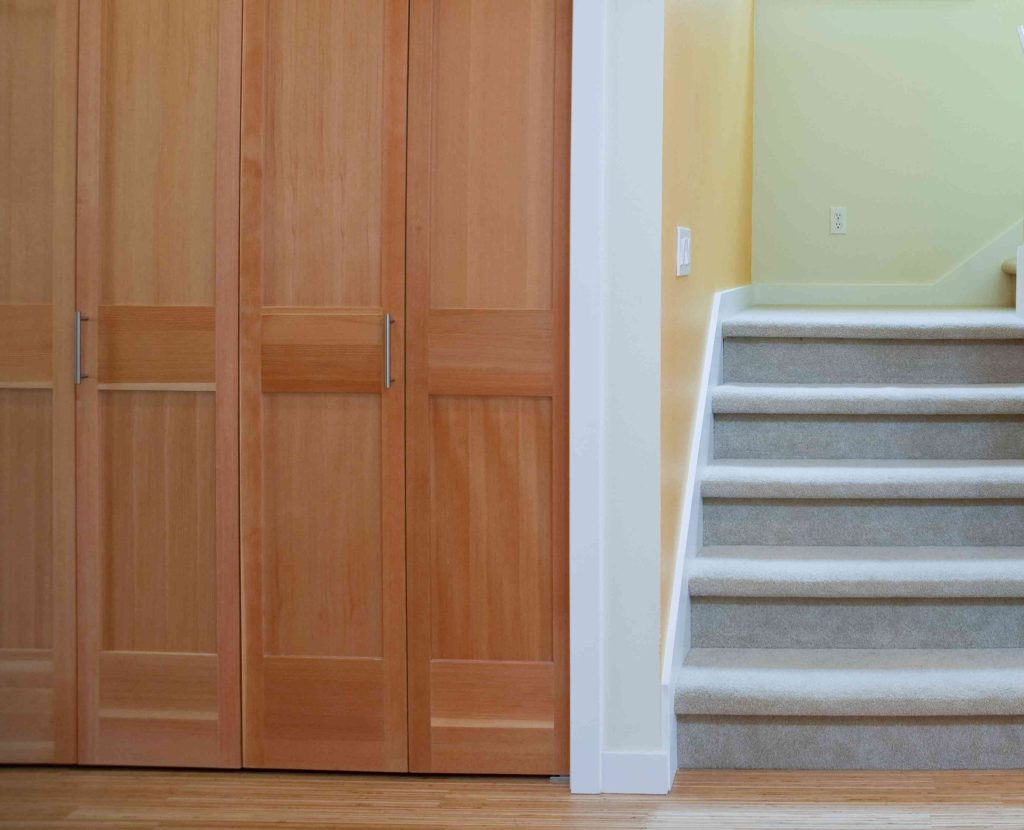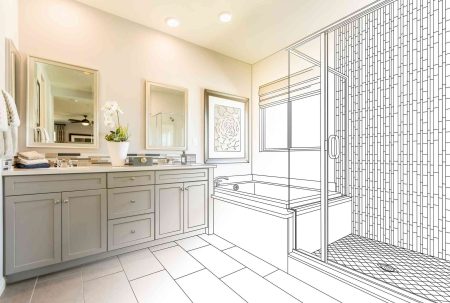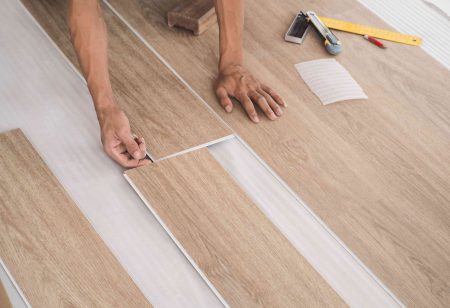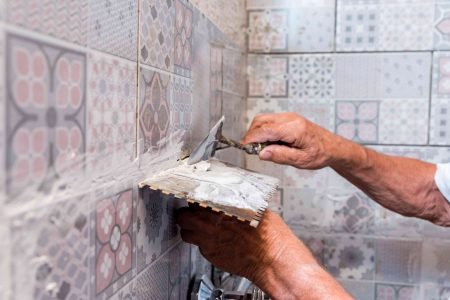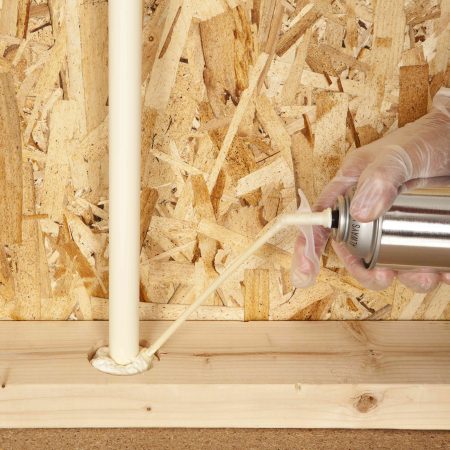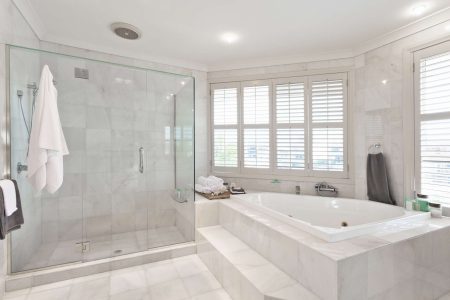Bi-fold doors have long been a staple of homes because they are lightweight, inexpensive, and can typically be installed by one person. While they are not designed for privacy or to keep out intruders, they do an excellent job at providing one basic service: covering areas that you would prefer not to see, such as laundry nooks, pantries, closets, and general storage areas. A single bi-fold door with two panels can be used on small closet openings in tight spaces instead of a swinging door. Learn how to install bi-fold doors from start to finish with these easy steps.
What Is a Bi-fold Door?
A bi-fold door is a door with two or more hinged panels that open like an accordion by folding back on tracks to one side of a door frame. The door styles can be solid, paneled, or louvered. They do not swing open or closed.
Before You Begin
If the door opening is out of square or not level, you may need to fix the issue before installing the doors so that they will operate properly.
Kits
Most bi-fold doors are installed with hardware kits. A bi-fold door set may come with knobs or pulls and a hardware kit. However, if you already have a door set or you are repairing an existing bi-fold door, you can buy a hardware kit that is sold separately. Measure the width and height of the door frame to get the right size door and/or hardware kit.
A standard bi-fold door hardware kit includes:
- A door track with mounting screws, a spring-loaded stop, and pivot guide
- A pivot bracket for the bottom of the door
- A solid pivot pin for the top of the door on the side that doesn’t open
- A roller pin with a nylon wheel on it, for the top of the door on the side that does open
- An adjustable pivot pin that fits into the bottom pivot bracket, on the side that doesn’t open
What You’ll Need
Equipment / Tools
- Pencil
- Drill with a wood drill bit and screwdriver bits
- Hammer
- Tape measure or measuring stick
- Long bubble level
Materials
- Bi-fold door with knobs/pulls and hardware kit
Instructions
How to Install a Bi-Fold Door
-
Install the Door Track
- Measure and mark a line down the center of the top of the door frame for the track. Use a long level to draw the line. This will ensure it’s installed straight.
- Slide the pivot guide into the door track so the pivot-pin hole will face the hinged (non-opening) side of the door when the track is installed.
- Position the door track on the top jamb of the door opening, and mark the mounting screw holes with a pencil.
- Set the track aside, and drill a pilot hole at each mark, using the drill and a wood bit that is slightly smaller than the mounting screws.
- Reposition the track and fasten it in place with its mounting screws, using the drill and a screwdriver bit.
-
Install the Top Pivot Pin
- Stand up the door and lean it against the wall near the door opening, in the position it will be installed.
- Note the two holes on the top of the door, one on each door panel. Insert the top pivot pin into the hole on the door panel that will be on the hinged (non-opening) side of the doorway.
- Push the pin all the way into the hole, using a hammer to tap it gently, if needed.
-
Install the Roller Pin
- Fit the roller pin into the hole on the other door panel.
- Tap it in with a hammer, if needed, but be careful not to damage the roller or the internal spring.
-
Install the Bottom Pin
- Fold the door in half and set it on the floor on its side edges.
- Insert the bottom pin into the hole on the hinged door panel; this pin must be on the same panel as the pivot pin on the top of the door.
- Tap it lightly with a hammer to seat the pin all the way in.
-
Install the Bottom Bracket
- Measure and mark the correct spot to install the L-shaped bottom bracket onto the door jamb on the hinged side of the door, following the manufacturer’s instructions.
- Use a long level and pencil to mark a plumb line down from the top of the track down the sides of the door jambs for this purpose. The L-shaped bottom bracket must line up correctly with the top track.
- Drill pilot holes and fasten the bracket with its mounting screws.
- Two screws driven into the side jamb should be sufficient, but an additional hole in the bracket is provided in case you want to screw it into the floor for added stability.
-
Install the Door Stop
Push the spring-loaded door stop into the end of the track on the opening side of the door. It should snap in by hand. Do not hammer it, as it can break easily.
-
Hang the Door
Find a helper for this step, if you can, to make maneuvering the door easier.
- Insert the top pivot pin into the pivot guide inside the track.
- Swing the bottom of the door into place so that the bottom pivot pin rests in the L-shaped bracket.
- If the door doesn’t fit properly between the top guide and the bottom bracket, raise or lower the door, as needed, by unscrewing or screwing in the adjustable pivot on the bottom of the door.
- Check the gap between the door and the hinge-side jamb; if it is uneven, change the position of the bottom pivot pin on its bracket to make the door gap even.
- Reach up and depress the spring-loaded wheel at the top of the door, swing the door into place to align the wheel under the track, then release the wheel so it pops into the track.
- Close and open the door to check for proper operation.
-
Install Door Pulls
Install your decorative door pulls or knobs wherever you’d like. The two middle door panels are the typical spots for pulls or knobs. If preferred, place the pulls or knobs more toward the hinges of the middle door panels and the doors will still easily open. Avoid putting the pulls or knobs on the outer panels or the doors will be very difficult to operate.
- Measure and mark the center of each panel where you are placing a pull or knob.
- Drill a hole to install the pull or knob.
- Secure the pull or knob per instructions.
Read the full article here







